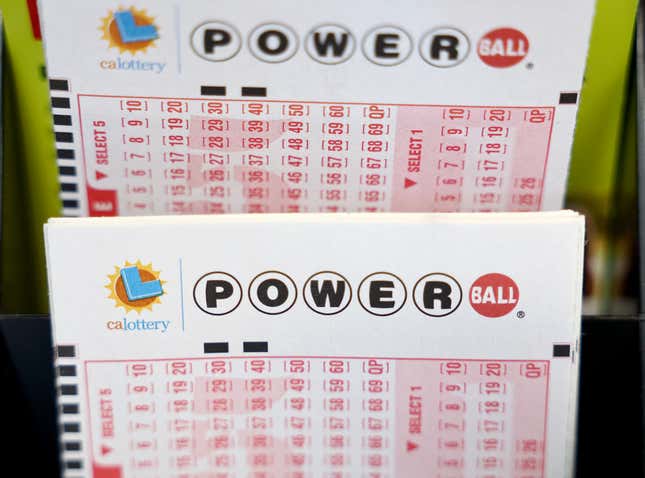
The Powerball lottery boasts a $1.05 billion jackpot for this week’s Friday (August 4) drawing, the fourth lottery to hit the billion-dollar benchmark in just the last year.
These high payouts are a new trend—only four other jackpots ever hit a billion dollars before the recent spate of windfalls. So what’s driving the increasing sums? High-interest rates mixed with a technicality on how lottery winnings are actually doled out to the winner.
In the current system, lottery winners can opt to take their winnings in either a one-time lump sum or an annuity—funded by the initial lump sum—which pays the winner annually over 30 years, with interest.
For example, this week’s lottery has an estimated lump sum of $527.9 million, which on its own would be the fifth highest lottery payout ever. (The sum is calculated by number of ticket sales, suggesting that playing the lottery is more popular than ever.)
However, if the winner chose a deferred payment plan—based on current interest rates—that lump sum would pay out $1.05 billion in a 30-year annuity, or the true value of the jackpot. Specifically, Powerball and Mega Millions purchase long-term zero-coupon bonds from the US government that fix the rate and keep the annuity consistent over the three decades.
Thus, the Federal Reserve’s decision to hike interest rates to a 22-year high explains the recent trend in billion-dollar jackpots.
There is also a benefit to the annuity in tax savings. The lump sum pushes the winner into a higher tax bracket than the annual payments would. The IRS considers lottery jackpots ordinary taxable income.
Still, most lottery winners don’t actually take home the entirety of the advertised winnings. In fact, two of the last three recent winners settled for the smaller sum putting them in line with the decisions of a majority of lottery winners. The decision and identity of the most recent winner, whose winning numbers were called on July 19, has yet to be revealed. Lottery owners have up to a year to claim their winnings.
Lottery winnings in the US, by the digits
$98 billion: Annual revenue generated by the lottery in the US. About 65% goes to prize money, while the rest of the revenue is up to the discretion of state governments.
33%: The rough percentage of lottery winners who go bankrupt.
$746: Amount spent per resident on the lottery in Massachusetts, the top state for lottery income. That’s ten times higher than Oklahoma, the next highest state with a per-resident lottery expenditure of $67.67.
What are the largest lottery jackpots ever?
$2 billion: Edwin Castro won the largest Powerball ever in November 2022, opting to receive $997.6 million in a lump sum. He reportedly bought a $25 million mansion in Hollywood and a vintage white Porsche.
$1.59 billion: Three tickets, across three different states, split the second-largest jackpot ever in January 2016. One of the winners—a California couple—took six months to claim the winnings.
$1.54 billion: The winner of the largest Mega Millions jackpot ever—purchased from a small South Carolina convenience store in October 2018— opted to remain anonymous, a decision only allowed in some states.
Related stories:
🤓 How to think about Powerball’s record “$2 billion” jackpot like an economist
📈 The Fed raised interest rates to a 22-year high, citing faster economic growth
🃏Who’s betting right on interest rates: Stock or bond investors?